Top 12 Largest Tanker Ships (also LNG, LPG) in the World
At present tanker ships are used to carry a wide range of products such as Hydrocarbon products like Liquefied Natural Gas (LNG), oil, Liquefied Petroleum Gas (LPG), etc. Following is a list of the top ten largest ship tankers in the world
Until the advent of tankers in the late 19th century, oil was transported in wooden barrels on barges and tankers. However, this method presented problems at various levels, as it was neither airtight nor cost-effective, and at the same time labor-intensive. It was the development of the first modern oil tanker, the Zoroaster, by Ludwig Nobel, brother of the famous Alfred Nobel, that led to revolutionary changes. With the advent of tankers, this relatively new idea caused a sensational metamorphosis in the way oil is transported, or for that matter any form of liquid or gas. Technological advances have led to the development of iron and steel hulls and the introduction of an efficient piping system. As a result, it now allows large volumes of bulk liquids such as oil and gas to be transported seamlessly in storage facilities.
Currently, tankers are used to transport a wide range of products such as hydrocarbon products such as liquefied natural gas (LNG), oil, liquefied petroleum gas (LPG), etc., chemicals such as ammonia, chlorine, etc., freshwater, wine. , molasses, etc.
The following is a list of the twelve largest offshore tankers in the world:
Currently, tankers are used to transport a wide range of products such as hydrocarbon products such as liquefied natural gas (LNG), oil, liquefied petroleum gas (LPG), etc., chemicals such as ammonia, chlorine, etc., freshwater, wine. , molasses, etc.
The following is a list of the twelve largest offshore tankers in the world:
1. Knock Nevis
Oil is the main mineral that regulates the entire world industry. It is much more profitable and economical to transport precious "black gold" on the water than in other ways. Knock Nevis - was the longest ship that not only transported oil but could even transport the Eiffel Tower.
The tanker had a maximum carrying capacity of 565,000 tons (regular ships have a maximum carrying capacity of 280,000 tons). The total length of the ship was really impressive and admirable (458 meters). This made it possible to transport oil to anywhere in the world in the amount of more than 125 million US dollars at a time. It was built in 1976, rebuilt in 1979, in recent years it was used as a floating oil storage facility, then delivered to Alang (Gujarat, India), where it was scrapped in 2009.
The tanker had a maximum carrying capacity of 565,000 tons (regular ships have a maximum carrying capacity of 280,000 tons). The total length of the ship was really impressive and admirable (458 meters). This made it possible to transport oil to anywhere in the world in the amount of more than 125 million US dollars at a time. It was built in 1976, rebuilt in 1979, in recent years it was used as a floating oil storage facility, then delivered to Alang (Gujarat, India), where it was scrapped in 2009.
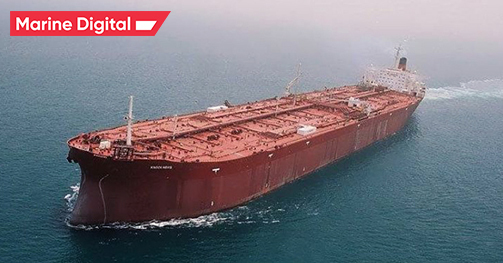
2. Universal Leader
The Crude Oil Tanker that was built in 2019 (3 years ago) and is sailing under the flag of Panama has a gross tonnage of 156,331. The vessel's Length overall (LOA) is 336 meters and width 60 meters. Coming under that category of Very Large Crude Oil Carrier (VLCC) the vessel was christened Universal Leader in a naming ceremony held by the HMM at Daewoo Shipbuilding & Marine Engineering (DSME)'s Okpo shipyard in Geoje, Korea.
The Universal Leader is the first of the five VLCCs as per the contract between HMM and DSME. The vessel is conditioned with a scrubber system as per the IMO environmental regulations and the novel engines will ensure that the fuel consumption is economically best.
The Universal Leader is the first of the five VLCCs as per the contract between HMM and DSME. The vessel is conditioned with a scrubber system as per the IMO environmental regulations and the novel engines will ensure that the fuel consumption is economically best.
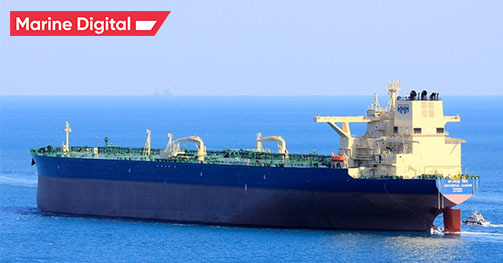
3. Shinshu Maru
The LNG Tanker was built in 2019 (3 years ago) and is sailing under the flag of the Bahamas. Delivered by Kawasaki Heavy Industries, the Shinshu Maru was second in the line of 177,000 cubic meters LNG carriers. Her current draught is reported to be 9.8 meters. Her length overall (LOA) is 299.9 meters and her width is 48 meters.
The carrier has four separate moss-type tanks, which increases its capacity compared to conventional standards. In addition to being able to increase the capacity of the tank, and therefore docking with the main LNG terminals, the hull is designed to withstand any major damage to the LNG tanks. One of the ship's destinations is the Panama Canal, which expanded in 2016.
The Bahamas-flagged vessel is powered by a dual-fuel diesel (DFD) engine that can run on both oil and gas, so is also economical.
The carrier has four separate moss-type tanks, which increases its capacity compared to conventional standards. In addition to being able to increase the capacity of the tank, and therefore docking with the main LNG terminals, the hull is designed to withstand any major damage to the LNG tanks. One of the ship's destinations is the Panama Canal, which expanded in 2016.
The Bahamas-flagged vessel is powered by a dual-fuel diesel (DFD) engine that can run on both oil and gas, so is also economical.
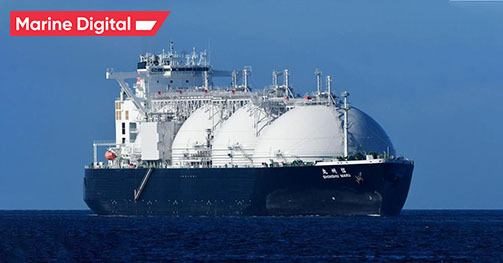
4. LNG Schneeweisschen
The LNG Schneeweisschen is an LNG Tanker that was built in 2018 (4 years ago) and is sailing under the flag of Panama, has an LOA of 297.9 meters and a beam of 47.9 meters. It has exhibited a maximum speed of 22.4 knots.
LNG Schneeweischen is the first in a series of LNG carriers acquired by Mitsui OSK Lines Ltd under a contract with the German utility group Uniper. It has a reservoir capacity of 180,000 cubic meters, gross tonnage, and deadweight of 111,000 and 97,000 respectively.
One of the essential features of the Schneeweischen is that it is equipped with a low-speed two-stroke engine (X-DF) capable of running on natural gas, marine gas oil, and fuel oil. A much more exciting feature is the Total Reliquefied Methane Refrigeration System (MRS-F), which, together with the X_DF engine, returns the reliquefied excess boil-off gas to the LNG cargo tank, making it extremely economical.
LNG Schneeweischen is the first in a series of LNG carriers acquired by Mitsui OSK Lines Ltd under a contract with the German utility group Uniper. It has a reservoir capacity of 180,000 cubic meters, gross tonnage, and deadweight of 111,000 and 97,000 respectively.
One of the essential features of the Schneeweischen is that it is equipped with a low-speed two-stroke engine (X-DF) capable of running on natural gas, marine gas oil, and fuel oil. A much more exciting feature is the Total Reliquefied Methane Refrigeration System (MRS-F), which, together with the X_DF engine, returns the reliquefied excess boil-off gas to the LNG cargo tank, making it extremely economical.
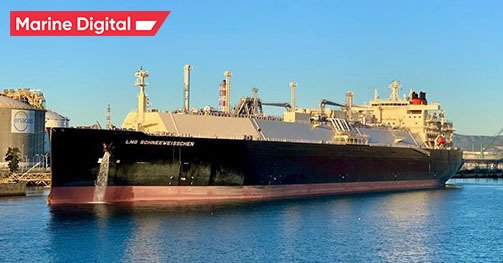
5. Diamond Gas orchid
The ship launched in the year 2018 takes fourth place. The LNG Tanker Diamond Gas Orchid is 297 meters long and 49 meters wide. The vessel's gross tonnage is 14,828. Built by the Mitsubishi Shipbuilding Co. Ltd. and flagged under the Bahamas, the vessel is equipped with Sayaringo-STaGE next-generation LNG carrier.
The name Sayaringo comes from the shape of its tank, which resembles a pea pod (Saya) and an apple (Ringo). This technique reduces air resistance, thereby increasing speed, but at the same time increasing the capacity of the tank.
The highly efficient STaGE engine (steam turbine and gas engine) runs on both gas and liquid fuels, which ensures the high fuel efficiency of the power plant. It also promises to be environmentally friendly.
The name Sayaringo comes from the shape of its tank, which resembles a pea pod (Saya) and an apple (Ringo). This technique reduces air resistance, thereby increasing speed, but at the same time increasing the capacity of the tank.
The highly efficient STaGE engine (steam turbine and gas engine) runs on both gas and liquid fuels, which ensures the high fuel efficiency of the power plant. It also promises to be environmentally friendly.
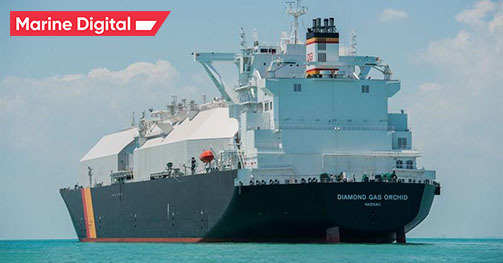
6. Flex Courageous
A large liquefied natural gas (LNG) tanker with a capacity of 173,400 cubic meters was launched in July 2019. The tanker is 295 meters long and 46 meters wide, with a gross tonnage of 110,000 tons and a deadweight of 95,618 tons.
The Marshall Islands-flagged vessel is the sixth Flex LNG vessel out of 13 vessels. This ship is equipped with a two-stroke MEGI engine with a partial recovery system and brings the boil-off coefficient to 0.075%.
The Marshall Islands-flagged vessel is the sixth Flex LNG vessel out of 13 vessels. This ship is equipped with a two-stroke MEGI engine with a partial recovery system and brings the boil-off coefficient to 0.075%.
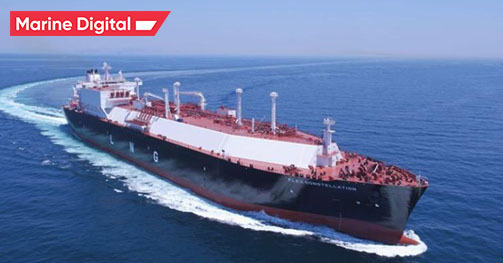
7. FSRU BW Magna
Built-in December 2019, the FSRU BW Magna LNG tanker is custom-built for the Gas Natural Acu project, the largest energy project in Latin America. Further modifications were made to her at the Sembawang shipyard. These modifications will ensure the proper contribution to energy and emission savings; as a consequence, this will reduce both BW Magna and the environmental impact of the project.
It flies under the flag of Singapore and has a capacity of 1 billion cubic meters per day. Its length is 294 meters, width - 46 meters, gross tonnage and deadweight - 116,047 and 83,870 tons.
It flies under the flag of Singapore and has a capacity of 1 billion cubic meters per day. Its length is 294 meters, width - 46 meters, gross tonnage and deadweight - 116,047 and 83,870 tons.

8. Gaslog Gladstone
Built by Samsung Heavy Industries and led by ABS, the Gaslog Gladstone is an LNG tanker that flies the flag of Bermuda. It was transferred to the management company Gazlog LLC on March 15, 2019.
The ship has a carrying capacity of 174 thousand cubic meters, a length of 293 meters, and a width of 46 meters. Its gross tonnage and deadweight are 1, 11,000, and 85 thousand tons, respectively. Sailing under the flag of Bermuda, her maximum speed is 17.8 knots.
As LNG Schneeweisschen (our number 4), it also features an X-DF dual-fuel engine for maximum traction that is both economical and environmentally friendly.
The ship has a carrying capacity of 174 thousand cubic meters, a length of 293 meters, and a width of 46 meters. Its gross tonnage and deadweight are 1, 11,000, and 85 thousand tons, respectively. Sailing under the flag of Bermuda, her maximum speed is 17.8 knots.
As LNG Schneeweisschen (our number 4), it also features an X-DF dual-fuel engine for maximum traction that is both economical and environmentally friendly.
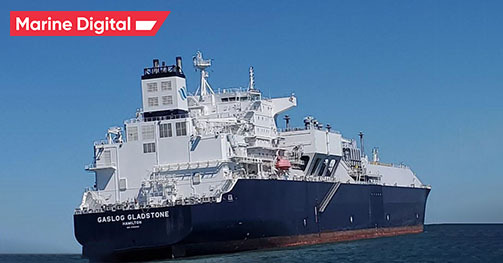
9. Gaslog Greece
The next tanker is the LNG carrier Gaslog Greece. Like the Gaslog Gladstone (number 8), this vessel was built and launched by Samsung Heavy Industries under the auspices of ABS in 2016.
Sailing the flag of Bermuda, she is 290 meters long and 46 meters wide, with a gross tonnage of 112,764 tons and a deadweight of just under 88,000 tons. The ship's draft is 10.7 meters. Among other things, Gaslog Greece boasts the innovative Wartsila dual-fuel engine technology, which provides flexibility and at the same time high efficiency.
Sailing the flag of Bermuda, she is 290 meters long and 46 meters wide, with a gross tonnage of 112,764 tons and a deadweight of just under 88,000 tons. The ship's draft is 10.7 meters. Among other things, Gaslog Greece boasts the innovative Wartsila dual-fuel engine technology, which provides flexibility and at the same time high efficiency.
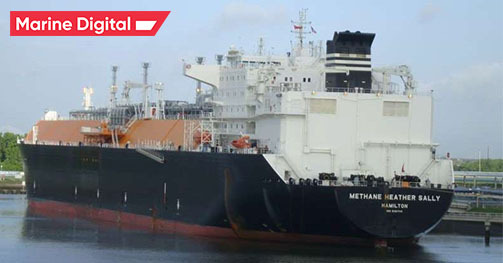
10. Pan Africa
The next place is occupied by a gas carrier capable of holding 174,000 cubic meters of liquefied gas. The latest vessel in the TPG Pan series operates alongside its sister vessels, Pan Asia 2017, Pan Europe 2018, and Pan American 2018. After making its maiden voyage, the ship entered into a 20-year charter for a subsidiary of Shell.
Pan Africa launched in early 2019. It is 290 meters long and 47 meters wide. It has a gross tonnage of just under 150,000 tons and a deadweight of 88,438 tons. The ship currently sails under the flag of Hong Kong.
Pan Africa launched in early 2019. It is 290 meters long and 47 meters wide. It has a gross tonnage of just under 150,000 tons and a deadweight of 88,438 tons. The ship currently sails under the flag of Hong Kong.
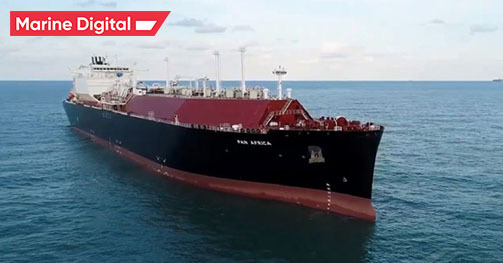
11. Seri Cemara
The Malaysian-flagged Seri Cemara is the latest in a series of five types of liquefied natural gas (LNG) tankers. The vessel has a length of 290 meters and a width of 49 meters. Its gross tonnage and deadweight are 133,948 and 84,291 respectively. With a capacity of 150,000,200 cubic meters, its maximum recorded speed is 14.3 knots.
The ship was designed for the MISC fleet by Hyundai Heavy Industries Co. Ltd. to facilitate energy transportation for Petronas, Malaysia's fully integrated oil and gas company. The ship has an Eco-Notation as a statement confirming its compliance with MARPOL projects.
The ship was designed for the MISC fleet by Hyundai Heavy Industries Co. Ltd. to facilitate energy transportation for Petronas, Malaysia's fully integrated oil and gas company. The ship has an Eco-Notation as a statement confirming its compliance with MARPOL projects.

12. Suiso Frontier
Suiso Frontier is most notable for being the world's first purpose-built liquefied hydrogen carrier. This is made possible thanks to a new 1,250-cubic-metre, vacuum-insulated double-shell-structure stainless steel LH2 cargo tank specially developed by Harima Works, a subsidiary of KHI.
The NK-classed Suiso Frontier has an LOA of 116 meters, a molded beam of 19 meters, a depth of 10.6 meters, a draught of 4.5 meters, a gross tonnage of approximately 8,000 tonnes, and accommodations for 25 crewmembers. A propulsion system consisting of three Daihatsu DE-23 1,320kW diesel engines and two 1,360kW electric motors enables the vessel to sail at speeds of up to 13 knots. The diesel engines also feature selective catalytic reduction (SCR) technology, ensuring compliance with IMO Tier III NOx regulations.
Read more about TOP 10 LNG shipping companies with LNG carriers and
10 Largest Oil Tanker Companies in the World
The NK-classed Suiso Frontier has an LOA of 116 meters, a molded beam of 19 meters, a depth of 10.6 meters, a draught of 4.5 meters, a gross tonnage of approximately 8,000 tonnes, and accommodations for 25 crewmembers. A propulsion system consisting of three Daihatsu DE-23 1,320kW diesel engines and two 1,360kW electric motors enables the vessel to sail at speeds of up to 13 knots. The diesel engines also feature selective catalytic reduction (SCR) technology, ensuring compliance with IMO Tier III NOx regulations.
Read more about TOP 10 LNG shipping companies with LNG carriers and
10 Largest Oil Tanker Companies in the World
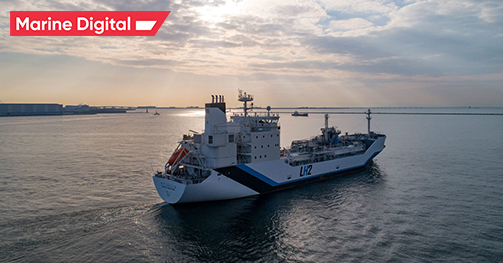

TOP 5 factors contributing to lower fuel costs for Shipping companies
Get a presentation with a full description of the features and free pilot project with trial of Marine Digital FOS for 2 months
"Clicking the button, you consent to the processing of personal data and agree to the privacy policy"

Get an overview "The Pathway to Zero Carbon Shipping:
IMO Compliance and CII Optimization through SEEMP" on email and download it for FREE! Leave your email now!
"Clicking the button, you consent to the processing of personal data and agree to the privacy policy, as well as consent to subscribe to the newsletter. "
Аdvantage of Fuel Optimization System from Marine Digital:

Marine Digital FOS can be integrated with other system and third-party's solutions through the API. To implement vessel performance monitoring for any vessel, we are using mathematical algorithms, machine learning and the same equipment as in FOS. The more data we collect from vessels, the more precise reports and recommendations our system will perform according to your individual requirements in fleet management.
If you have any questions about the solutions and the Marine Digital System platform, write to us, we will be happy to answer
If you have any questions about the solutions and the Marine Digital System platform, write to us, we will be happy to answer

Increased business process speed

Reducing to zero the number of errors

Best offer to the clients

Reduction in operating expenses
Have a questions?





